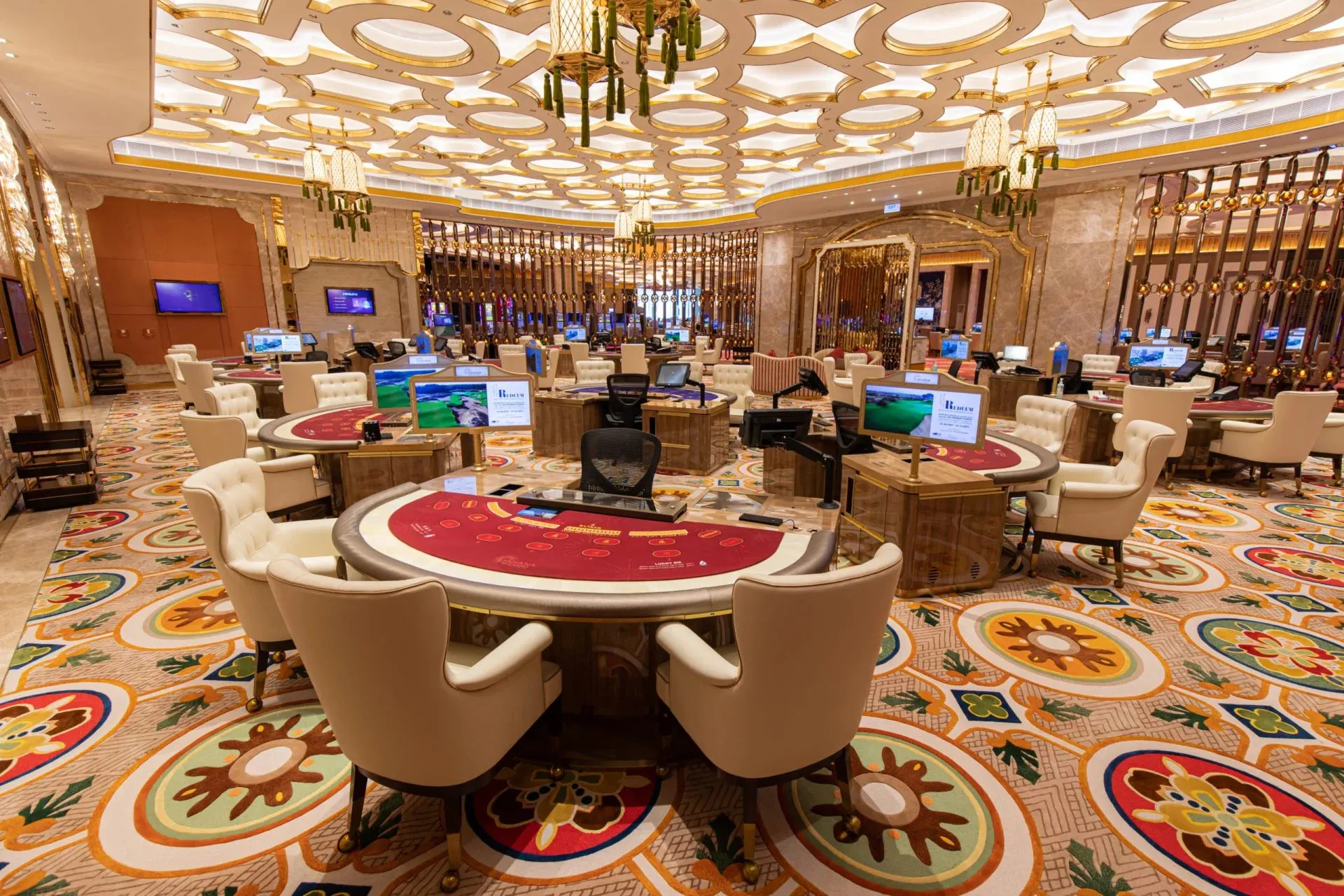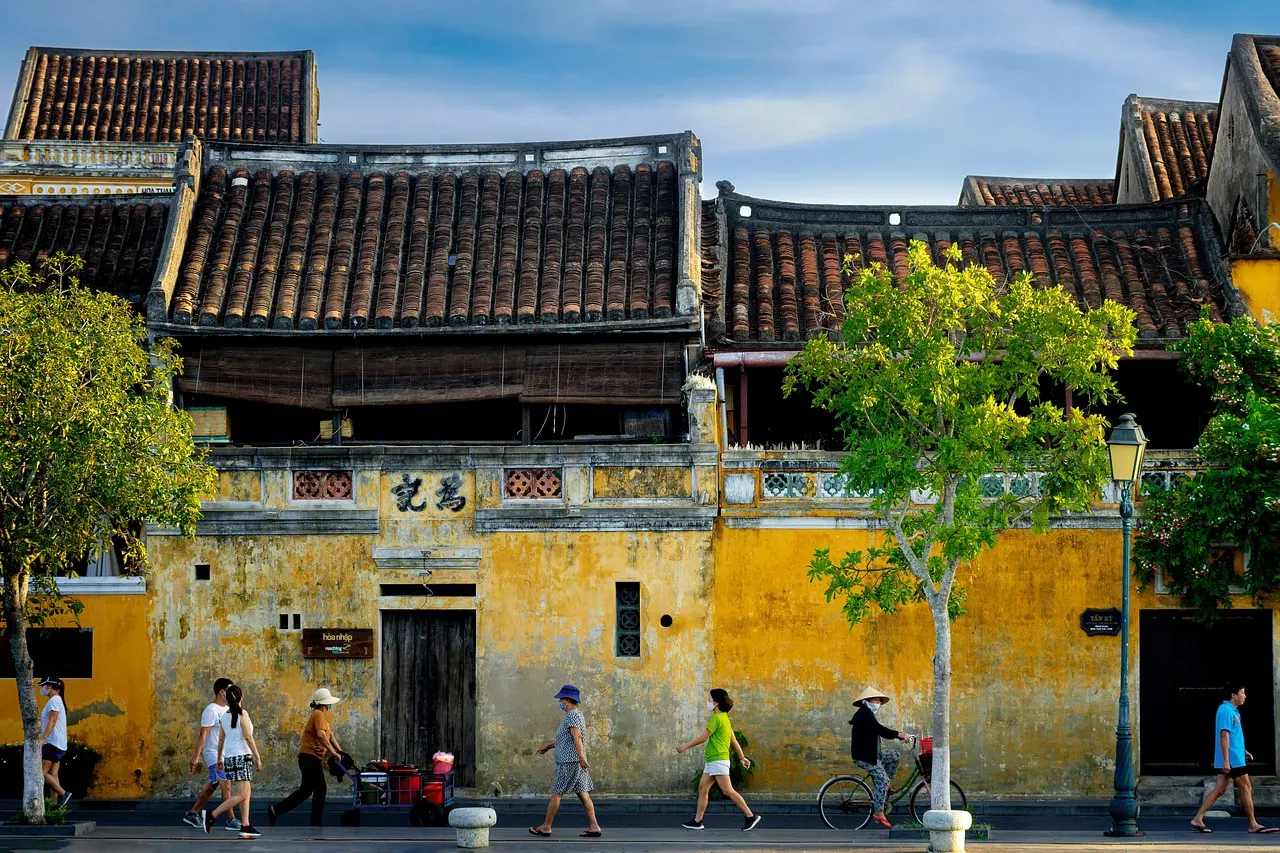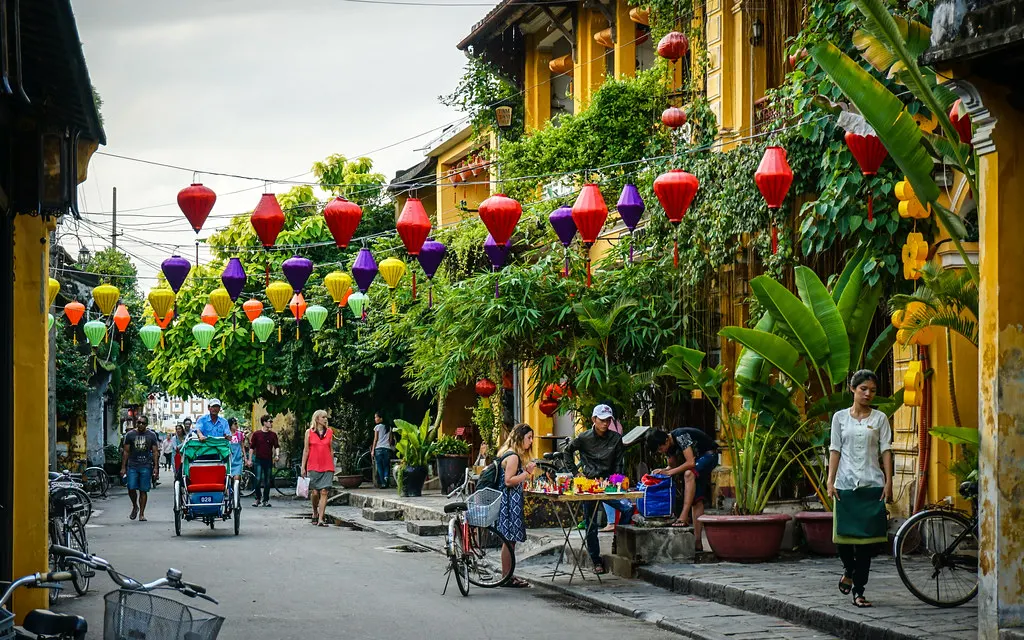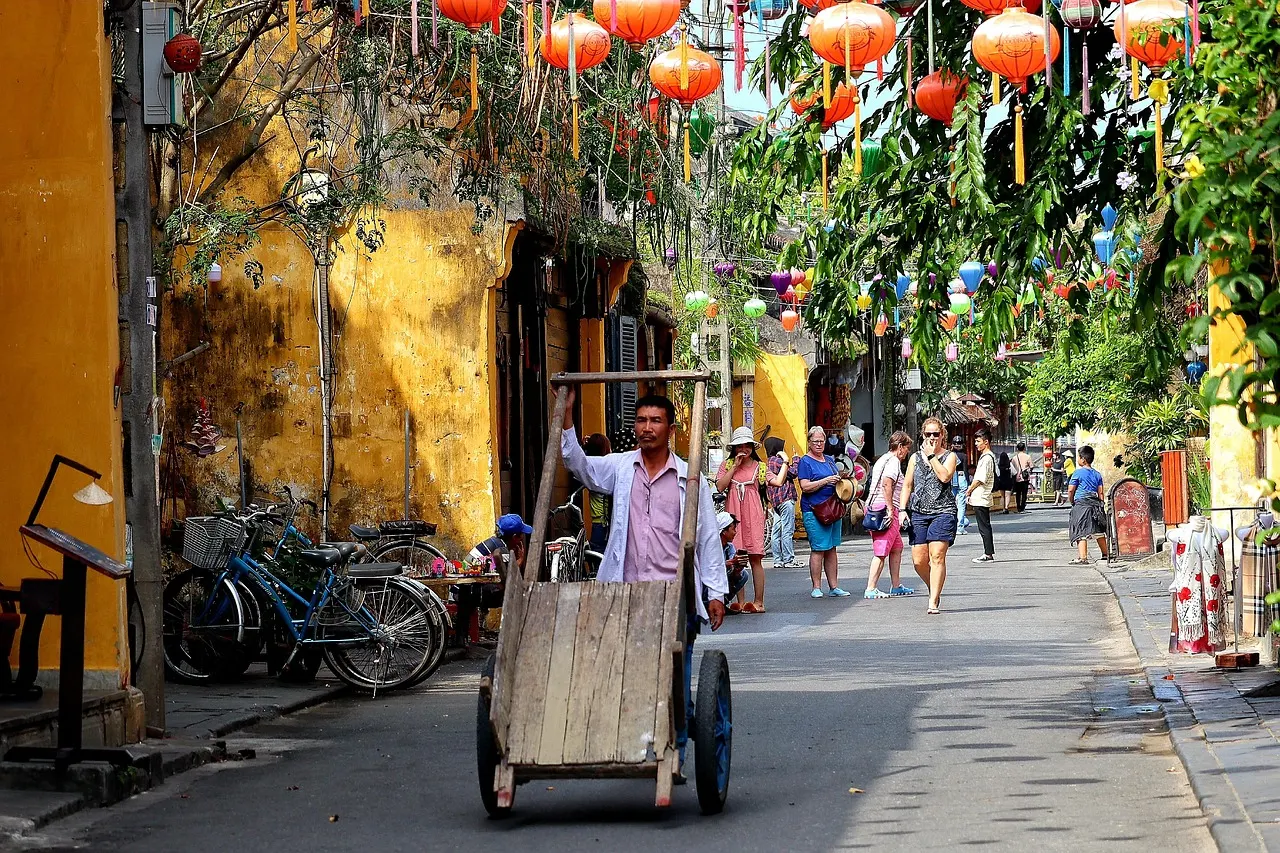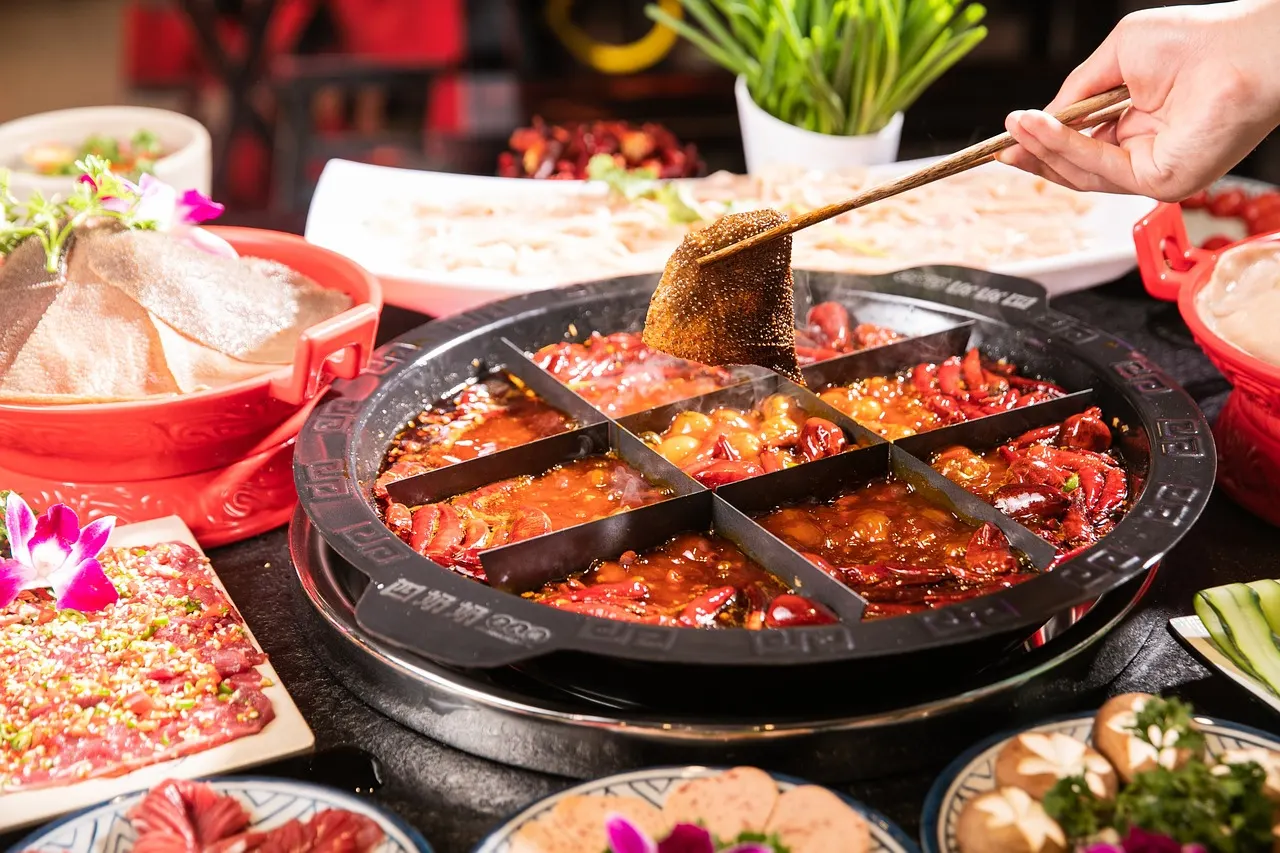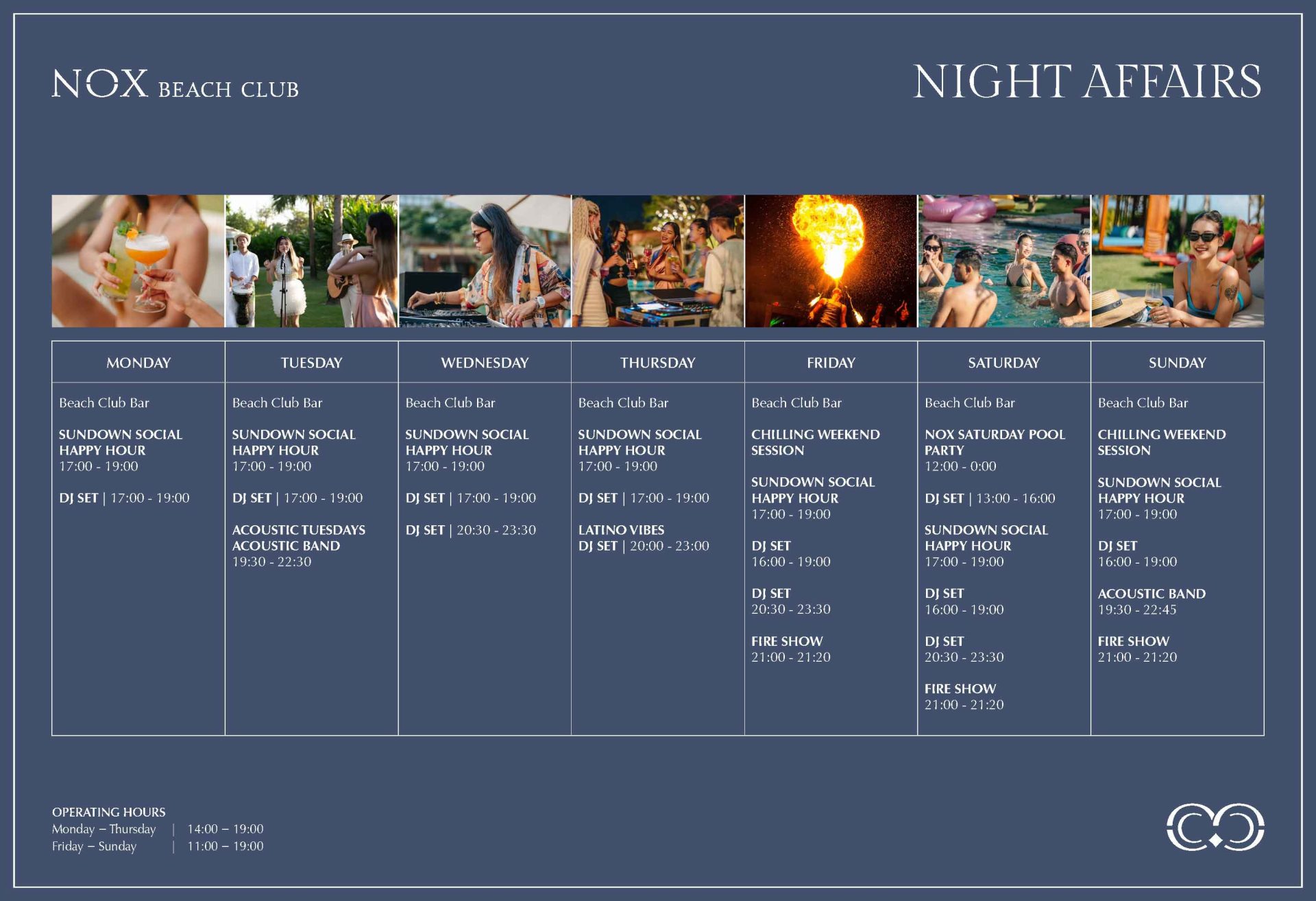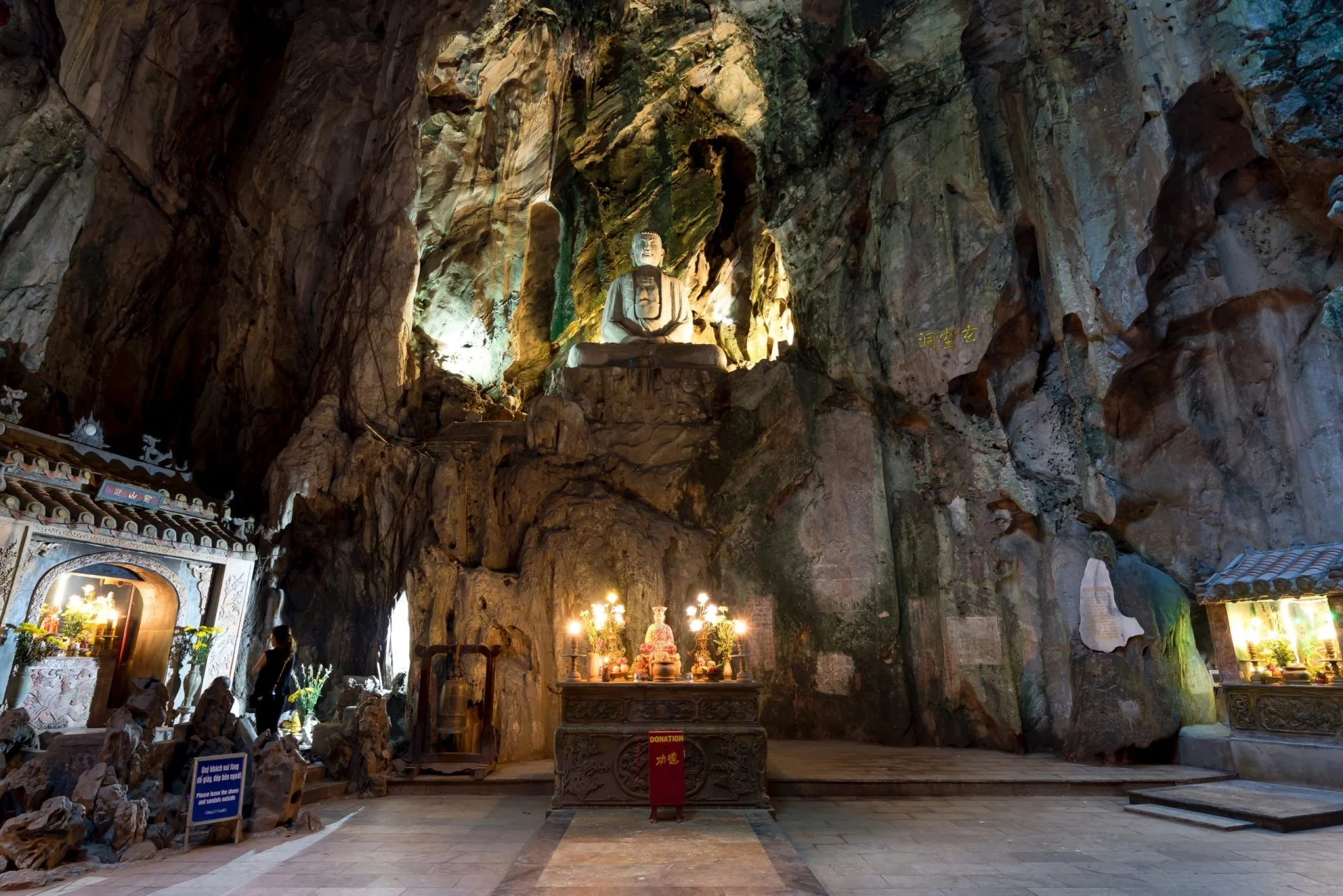
The Marble Mountains in Da Nang offer a perfect blend of history, nature, and spirituality. As you climb the stone-carved steps, you’ll discover ancient pagodas, sacred caves, and breathtaking panoramic views. This iconic landmark is a must-visit for those seeking cultural exploration and scenic beauty. Here’s everything you need to know for your visit.
Overview of Marble Mountains in Danang
The Marble Mountains in Da Nang are a group of five limestone and marble hills located in Ngu Hanh Son District, about 9 kilometers south of Da Nang city center. The mountains lie along Huyen Tran Cong Chua Street, near Non Nuoc Beach, making them easily accessible from both Da Nang and Hoi An. Their exact coordinates are 15.9755° N latitude and 108.2609° E longitude.

This site is one of Da Nang’s most famous natural and cultural landmarks, offering visitors a blend of stunning landscapes, historical sites, and spiritual significance. The five mountains, named after the five elements in Eastern philosophy—Kim (Metal), Moc (Wood), Thuy (Water), Hoa (Fire), and Tho (Earth)—rise dramatically from the flat coastal plains.
The Marble Mountains in Da Nang have a rich history tied to Vietnamese legends, Buddhism, and wartime events. Formed over 250 million years ago, they are believed to have originated from a mythical dragon’s egg, with broken shell pieces transforming into the five mountains. During the Nguyen Dynasty, King Minh Mang named them based on the five elements, and Buddhist pagodas like Tam Thai Pagoda were built.
How to Get to Marble Mountain in Da Nang
The Marble Mountains in Da Nang are a well-connected tourist attraction, located approximately 9 km south of Da Nang city center and 20 km north of Hoi An. Due to their convenient location along Huyen Tran Cong Chua Street, visitors can easily reach the site by various modes of transportation, including motorbikes, taxis, buses, and private cars.
From Hoi An
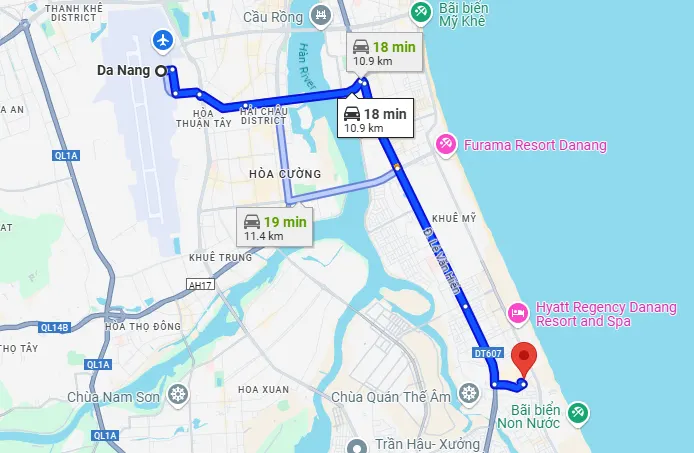
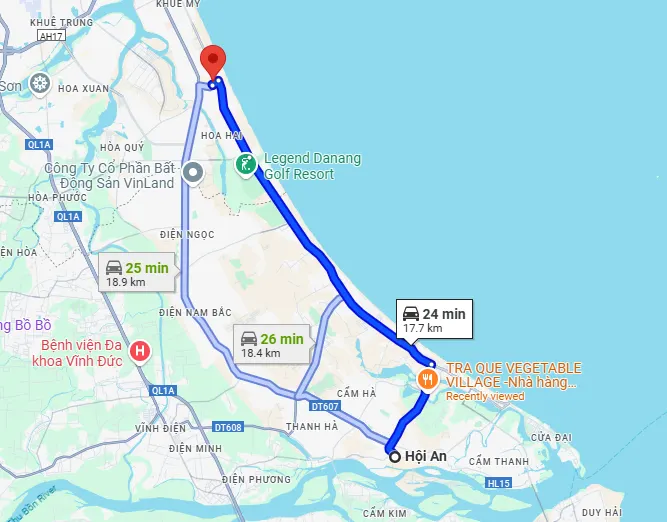
Traveling from Hoi An to Marble Mountains is simple and takes around 25 minutes, depending on the mode of transport and traffic conditions. The distance between the two locations is about 20 km, mostly along the coastal road of Vo Nguyen Giap, offering scenic views of the beach, including some of the best beaches in Hoi An.
By Motorbike

Renting a motorbike in Hoi An costs between 120,000 – 200,000 VND per day ($5–$8 USD). This option gives visitors the flexibility to explore at their own pace. The most scenic route follows Cua Dai Road, merging onto Vo Nguyen Giap Street, passing through Non-Nuoc Beach before arriving at the Marble Mountains in Da Nang. For those on solo travel in Vietnam, this is an ideal way to enjoy the freedom of exploring the region at your own rhythm.
By Taxi or Ride-Hailing Services
A taxi ride from Hoi An costs around 250,000 – 300,000 VND ($10–$12 USD). Popular ride-hailing services such as Grab and Be offer slightly lower prices, ranging from 180,000 – 250,000 VND ($7–$10 USD).
By Bus
The cheapest option is Da Nang to Hoi An Bus Route #1, which runs every 20–30 minutes from 5:30 AM to 6:00 PM. The fare is 30,000 VND ($1.20 USD), and visitors should get off at the Non Nuoc Market stop, a 10-minute walk from the Marble Mountains.
For those traveling from Hue to Hoi An, the same options apply, making it easy to enjoy the scenic journey from one city to another while exploring the region.
From Da Nang

For those coming from Da Nang city center, reaching the Marble Mountains in Da Nang is even quicker, with travel time averaging 15–20 minutes over a distance of 9 km.
By Car
For travelers seeking convenience and flexibility, renting a car is one of the best ways to visit the Marble Mountains in Da Nang. Several car rental agencies, including Avis, Hertz, and local companies like Dichung Taxi and Da Nang Car Rental, offer a range of vehicles from economy cars to luxury SUVs. Rental prices typically start at $25–$40 per day for self-drive options, while hiring a private car with a driver costs around $50–$80 per day, depending on the car type and duration. Having a car allows visitors to explore the Marble Mountains at their own pace, avoiding the hassle of public transportation.

The drive from Da Nang city center to the site takes only 15–20 minutes via Vo Nguyen Giap or Le Van Hien Street, making it a quick and scenic trip. Additionally, car rentals provide easy access to nearby attractions like My Khe Beach and Hoi An, making it an ideal choice for those planning a day trip. International travelers should check license requirements, as Vietnam mandates a valid international driver’s permit (IDP) for self-driving.
By Taxi or Ride-Hailing Services
A taxi ride costs 120,000 – 180,000 VND ($5–$8 USD), while Grab and Be rides are slightly cheaper at 100,000 – 150,000 VND ($4–$6 USD). This is the most convenient option for those who prefer comfort over budget.
By Bus
The Da Nang – Hoi An Bus Route #1 also stops near the Marble Mountains, costing 20,000 VND ($0.80 USD) for a one-way ticket. The nearest stop is Non Nuoc Market, from which visitors can walk about 600 meters to the entrance.
By Bicycle
For adventure seekers, renting a bicycle in Da Nang costs 50,000 – 80,000 VND per day ($2–$3 USD). The ride takes about 40–50 minutes, following the scenic coastal route of Vo Nguyen Giap Street. However, this option is best suited for morning or late afternoon to avoid the midday heat.
Here’s a table summary of transportation prices:
| Mode of Transport | Price Range (VND) | Approximate Price (USD) | Travel Time |
| Motorbike Rental | 100,000–150,000 VND | $4–$6 USD | 25 min (Hoi An), 15-20 min (Da Nang) |
| Taxi | 150,000–250,000 VND | $6–$10 USD | 25 min (Hoi An), 15-20 min (Da Nang) |
| Bus | 20,000–30,000 VND | $0.80–$1.20 USD | 30-40 min |
| Bicycle Rental | 50,000–80,000 VND | $2–$3 USD | 40-50 min |
Entrance Fees and Opening Hours
When planning a visit to the Marble Mountains in Da Nang, it’s essential to know the entrance fees and operating hours to make the most of your trip.
Entrance Fees
The entrance fees for the Marble Mountains vary depending on the attractions visitors wish to explore. Below is a breakdown of the ticket prices:
| Ticket Type | Price (VND) | Price (USD) |
| Entrance to Thuy Son (Main Mountain) | 40,000 VND | ~$1.60 USD |
| Elevator to Thuy Son (One-Way) | 15,000 VND | ~$0.60 USD |
| Elevator to Thuy Son (Round Trip) | 30,000 VND | ~$1.20 USD |
| Am Phu Cave Entrance | 20,000 VND | ~$0.80 USD |
| Children Under 6 Years Old | Free | Free |
For those interested in a guided experience, local guides are available for hire at a fee of 50,000 VND per group. This can enhance your understanding of the site’s historical and cultural significance.
Opening Hours
The Marble Mountains are open to visitors daily from 7:00 AM to 5:30 PM. To fully appreciate the site’s natural beauty and historical significance, it’s recommended to allocate at least 2 to 2.5 hours for your visit.
Top 5 Attractions at Marble Mountains in Danang
The Marble Mountains in Da Nang are a must-visit destination, offering a unique blend of natural beauty, spiritual sites, and historical significance. Here are five top attractions you shouldn’t miss.
Linh Ung Pagoda
Located on the eastern side of Thuy Son (Water Mountain), Linh Ung Pagoda is one of the most famous temples in the Marble Mountains in Da Nang. With a history of over 200 years, this peaceful temple attracts visitors looking to pray, admire Buddhist architecture, or simply enjoy a quiet escape from the busy city.

The most eye-catching feature of Linh Ung Pagoda is its 10-meter-tall white Buddha statue, seated in a meditative pose. Made from Non Nuoc marble, this statue represents Shakyamuni Buddha, symbolizing wisdom and peace. The craftsmanship is remarkable, with intricate details reflecting the skills of local stone carvers from Non Nuoc Stone Carving Village, which has been around for more than 400 years.
Another highlight is the Xa Loi Tower, a 28-meter-tall structure with seven floors, built in 1997. It is the largest collection of stone Buddhist statues in Vietnam, housing 200 statues of Buddha, Bodhisattvas, and Arhats inside. Climbing to the top rewards visitors with stunning views of Da Nang’s coastline, making it a popular spot for both spiritual seekers and photographers.
The Five Marble Mountains

The Marble Mountains in Da Nang consist of five distinct limestone and marble hills, each named after one of the five elements in Eastern philosophy: Metal (Kim), Wood (Moc), Water (Thuy), Fire (Hoa), and Earth (Tho). The formation of these mountains dates back over 250 million years, with their unique structure shaped by geological changes and erosion.
1. Thuy Son (Water Mountain) – The Heart of Marble Mountains
Thuy Son is the largest and most visited of the five mountains. Standing at 160 meters high, it is home to multiple caves, pagodas, and breathtaking viewpoints. Visitors can climb 156 stone steps to reach the top or take an elevator for a small fee.
Some of the main highlights here include:
- Tam Thai Pagoda, built in the 17th century, is one of the oldest temples in the area.
- Huyen Khong Cave, known for its open ceiling, allows sunlight to stream in beautifully, creating a mystical atmosphere.
2. Moc Son (Wood Mountain) – The Mountain of Mystical Beauty
Unlike its name, Moc Son does not have dense vegetation but is famous for the Ba Quan Am (Lady Buddha) statue. This natural white marble formation, resembling a seated Buddha, has been worshipped for generations. It is the only mountain that remains largely untouched, making it a peaceful retreat for those looking to escape the crowds.
3. Hoa Son (Fire Mountain) – The Twin Peaks
Hoa Son is divided into two peaks, Yang Fire and Yin Fire, connected by a small stone pathway. Key attractions here include:
- Pho Da Son Pagoda, a quiet Buddhist temple with ancient stone carvings.
- Caves with ancient inscriptions, believed to date back to the Champa Kingdom (7th-15th century).
4. Kim Son (Metal Mountain) – The Mountain of Sacred Worship
Kim Son is home to Quan Am Pagoda, one of the most spiritually significant temples in the region. The main attraction here is the cave beneath the mountain, where a huge stalagmite naturally shaped like the Bodhisattva Avalokiteshvara (Goddess of Mercy) stands. This site is a major pilgrimage destination, with thousands of Buddhists visiting annually to pray for blessings and good fortune.
- Tho Son (Earth Mountain) – The Hidden War Relic
Tho Son is the lowest but longest of the five mountains. Unlike the other peaks, it has a series of hidden tunnels and caves, which were used as secret hideouts and hospitals by the Viet Cong during the Vietnam War (1955–1975). Today, visitors can walk through these historical tunnels, where remnants of wartime activities, such as old markings and bullet holes, can still be seen.
Huyen Khong Cave
Huyen Khong Cave is one of the most famous and breathtaking caves in the Marble Mountains in Da Nang, located within Thuy Son (Water Mountain). It is widely regarded as the most beautiful cave in the area due to its open ceiling, allowing natural sunlight to filter through and illuminate the cave’s interior with an ethereal glow.
A prominent feature within the cave is the 3-meter-tall statue of Shakyamuni Buddha, crafted in 1960 by artisan Nguyen Chat from the nearby Non Nuoc Stone Carving Village.
During the Vietnam War (1955–1975), Huyen Khong Cave served as a Viet Cong field hospital and a strategic hideout. Some areas of the cave still bear wartime carvings and bullet holes, offering visitors a glimpse into Vietnam’s turbulent past. Today, it stands as a symbol of resilience and faith, attracting both history enthusiasts and spiritual seekers.
Visiting Huyen Khong Cave is certainly one of the best things to do in Hoi An for those interested in exploring the rich history and natural beauty of the region.
Am Phu Cave
Am Phu Cave, also known as the “Cave of Hell,” provides a profound journey into Vietnamese Buddhist interpretations of the afterlife. Situated at the base of Thuy Son Mountain, this extensive cave system is designed to represent a descent into the Buddhist concept of hell.

Visitors traverse bridges and pathways that lead them through chambers depicting vivid scenes of sinners undergoing various punishments, overseen by statues of demons and the Ten Kings of Hell.
Tam Thai Pagoda
Located on Thuy Son Mountain, Tam Thai Pagoda is one of the most historically significant sites in the Marble Mountains in Da Nang. Originally built in the 17th century during the reign of the Le Dynasty, the pagoda has undergone multiple restorations, with a major reconstruction ordered by Emperor Minh Mang in 1825.
One of the most striking features of Tam Thai Pagoda is its unique three-tiered structure, symbolizing different realms in Buddhist belief. The entrance gate follows a traditional three-door design, with the central door reserved for monks and the side doors designated for male and female visitors.
Recognized as a National Historical-Cultural Heritage Site, Tam Thai Pagoda remains a must-visit destination for those exploring the spiritual and architectural wonders of the Marble Mountains in Da Nang.
See more: Hoi An Pagoda: Top 10 Must-Visit Spiritual Sites 2025
Tips for Visiting Marble Mountain
Visiting the Marble Mountains in Da Nang offers a blend of natural beauty, spiritual exploration, and cultural insight. To make the most of your trip, consider the following detailed tips:
1. Best Time to Visit
The best time to visit the Marble Mountains in Da Nang is from January to August when the weather is mild, with temperatures ranging from 22°C to 28°C (72°F to 82°F). This period offers clear skies and pleasant conditions for hiking and exploring caves.
If visiting in the summer (June to August), it’s best to go early in the morning or late afternoon to avoid the midday heat. The rainy season (September to December) can make the paths slippery, so extra caution is needed.
2. What to Wear and Bring
Since exploring the Marble Mountains involves a lot of walking, comfortable shoes with good grip are essential, especially for navigating the stone steps and caves. Light, breathable clothing is recommended due to Da Nang’s warm climate.
If you plan to visit pagodas, bring a scarf or a light jacket to cover your shoulders as a sign of respect. Other essentials include a hat, sunscreen, and a bottle of water, as there are limited shaded areas along the trails.
3. Safety Tips
Some of the pathways and caves inside the Marble Mountains can be dark and uneven, so bringing a flashlight or using your phone light can be helpful in dimly lit areas. Watch out for slippery steps, especially during or after rain.
4. Hiring a Local Guide
To fully understand the history and significance of the caves, pagodas, and sculptures, hiring a local guide can enhance your experience. Many guides are available near the entrance and charge around 100,000 – 150,000 VND ($4 – $6 USD) for a detailed tour. They can provide interesting insights into the legends, Buddhist teachings, and even the wartime history of the area.
Nearby Attractions to Combine with Your Trip
When visiting the Marble Mountains in Da Nang, there are several nearby attractions that can enhance your trip. Here are 3 notable destinations:
Hoi An Ancient Town ( 20 km away)
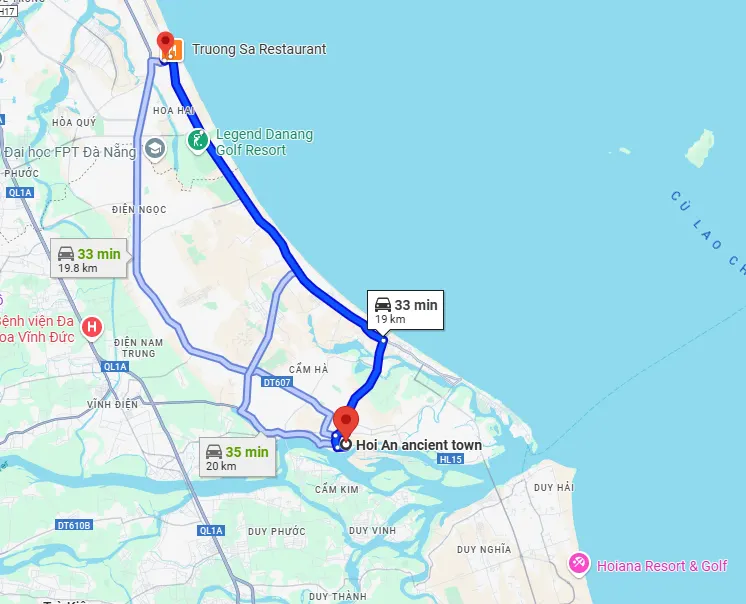
Located just 20 km south of the Marble Mountains in Da Nang, Hoi An Ancient Town is a must-visit destination for travelers looking to experience Vietnam’s rich history and well-preserved heritage.
A UNESCO World Heritage Site since 1999, Hoi An was once a bustling international trading port from the 15th to 19th century, attracting merchants from China, Japan, and Europe. Today, it remains one of Vietnam’s most enchanting old towns, filled with centuries-old buildings, vibrant lantern-lit streets, and a peaceful riverside atmosphere.
One of the most iconic landmarks in Hoi An is the Japanese Covered Bridge (Chùa Cầu), originally built in the 16th century by the Japanese community. The bridge, which features a small temple in the center, is an architectural masterpiece, showcasing a unique blend of Japanese and Vietnamese influences.
My Khe Beach ( 10km away)
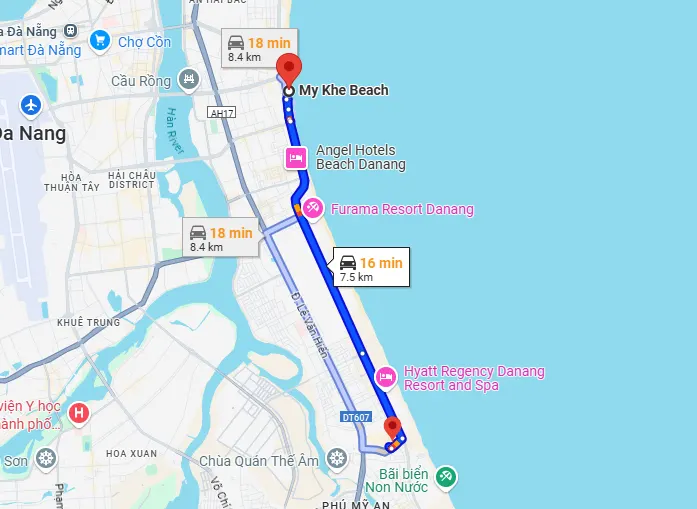
My Khe Beach, a stunning 10-kilometer stretch of coastline, is located approximately 10 kilometers from the Marble Mountains and is celebrated as one of Vietnam’s most beautiful beaches. Forbes magazine has even nominated My Khe as one of the world’s sixth most beautiful beaches. The beach extends from the foot of the Son Tra Peninsula to the Marble Mountains, making it easily accessible from Da Nang.
Visitors can enjoy various activities, including swimming, sunbathing, and participating in beach sports like volleyball, jet skiing, and parasailing. Moreover, numerous seafood restaurants along Vo Nguyen Giap coastal road provide a diverse selection of fresh seafood.
Here are some recommended seafood restaurants near My Khe Beach:
- Ngoc Huong Seafood Restaurant – Lo 8,9 Vo Nguyen Giap, Son Tra, Da Nang
- Moc Seafood – 26 To Hien Thanh, Son Tra, Da Nang
- My Hanh Seafood Restaurant – 3-5 Vo Nguyen Giap, Phuoc My, Son Tra, Da Nang
- Be Bien Seafood Restaurant – 202 Vo Nguyen Giap, Son Tra, Da Nang
Bana Hills & Golden bridge ( 40 km away)
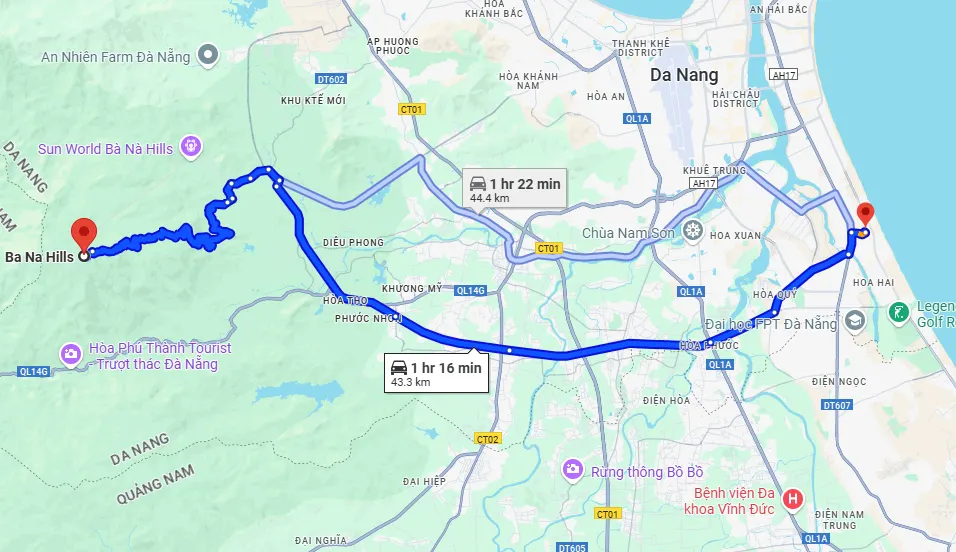
Situated about 40 kilometers from the Marble Mountains, Ba Na Hills is a hill station and resort complex that offers a blend of natural beauty and modern attractions. One of its most iconic features is the Golden Bridge, a 150-meter-long pedestrian bridge perched 1,400 meters above sea level.
Opened in 2018, the bridge is renowned for its unique design, appearing to be held aloft by two massive stone hands emerging from the mountainside. Visitors can access Ba Na Hills via a cable car system that holds several world records, including the longest non-stop single track at over 5 kilometers.
Where To Stay For Marble Mountains Lovers?
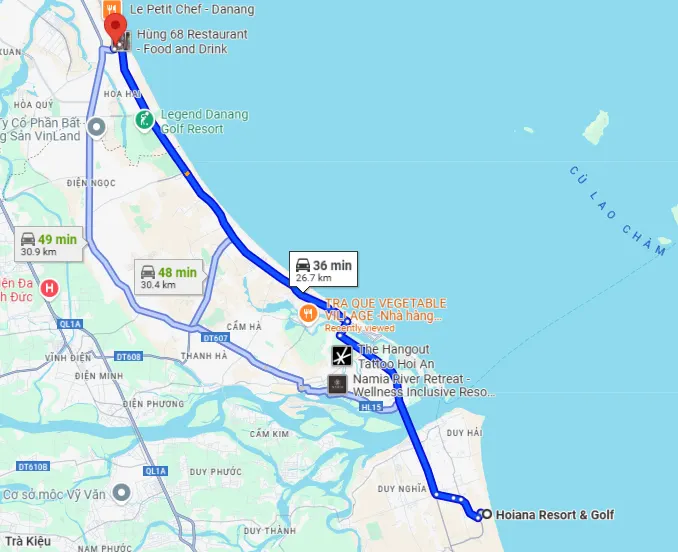 For travelers passionate about the Marble Mountains in Da Nang, Hoiana Resort & Golf stands out as an exceptional accommodation option. Conveniently located just 25 kilometers from the Marble Mountains, the resort is approximately a 35-minute drive away, making it an ideal base for exploring this stunning natural and cultural landmark.
For travelers passionate about the Marble Mountains in Da Nang, Hoiana Resort & Golf stands out as an exceptional accommodation option. Conveniently located just 25 kilometers from the Marble Mountains, the resort is approximately a 35-minute drive away, making it an ideal base for exploring this stunning natural and cultural landmark.

While the resort’s proximity to the Marble Mountains is a highlight, it also offers easy access to other regional treasures, such as the charming Hoi An Ancient Town and the My Son Sanctuary, a UNESCO World Heritage Site. However, for those with a particular love for the Marble Mountains, Hoiana Resort & Golf shines as a luxurious retreat that balances convenience, comfort, and exceptional amenities.

The resort boasts over 1,000 rooms, suites, and residences, catering to a wide range of preferences and ensuring a comfortable stay tailored to your needs. Beyond its impressive accommodations, Hoiana Resort & Golf offers an array of amenities designed to enhance your experience.
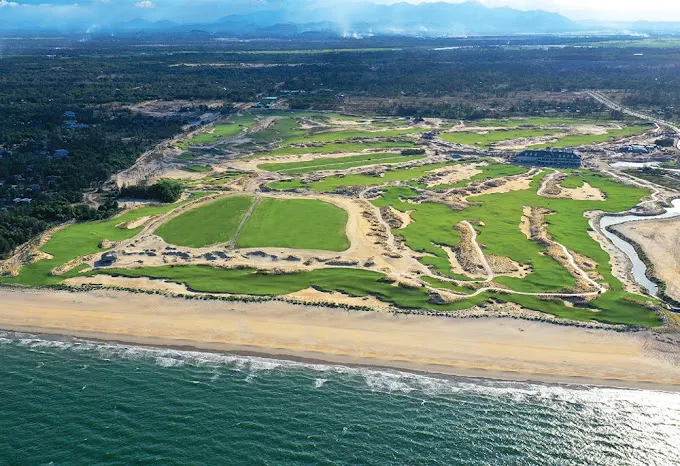
For those who enjoy a bit of leisure after a day of exploration, the Hoiana Shores Golf Club—an 18-hole championship course designed by acclaimed architect Robert Trent Jones Jr.—delivers a world-class golfing experience set against breathtaking landscapes. It’s a perfect complement for Marble Mountains lovers who also appreciate a scenic round of golf.

After a day of discovering the wonders of the Marble Mountains, unwind at Downtime Renew, located on the Lower Ground Floor (LG/F). Operating 24/7, this luxurious spa offers an extensive range of treatments, including traditional Vietnamese massages, advanced facial care, and modern body wraps. With its tranquil ambiance and personalized services, Downtime Renew provides the ultimate relaxation, helping you recharge for your next adventure.
Conclusion
We hope this guide has provided you with valuable insights into the breathtaking Marble Mountains in Da Nang—a destination that perfectly blends nature, spirituality, and history.
For those seeking luxurious and convenient accommodation after a day of exploration, Hoiana Resort & Golf is the perfect retreat, just a 30-minute drive from the Marble Mountains. Book your stay at Hoiana Resort & Golf today and make your journey through Central Vietnam even more extraordinary!









